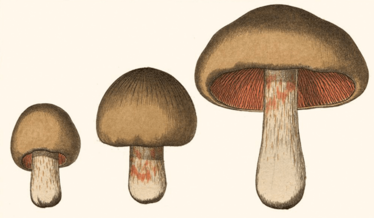Sterility Fears at the NIH
How did the NIH get it so wrong – and how can it move on?

Aseptic processing is a complex art and it seems no one is immune to problems– or the resulting publicity backlash – including the US National Institutes of Health (NIH). At the start of June, NIH had to shut down sterile operations at its Pharmaceutical Development Section (PDS) after an FDA inspection identified several problems, including fungus contamination in vials of albumin. Drugs from the same batch have already been administered to patients in clinical research programs, who are now being closely monitored.
And the fungal faux pas was only the start of the problems. Some relate to the building, such as flaws in the air handling system, and the construction of the building itself not being best suited to facilitate cleaning, maintenance and proper operations. Operators failed to wear sufficient protective apparel when working with sterile drug products and there was a lack of training in GMP – one operator claimed to have received no GMP training whatsoever. Other problems included deficiencies in cleaning and disinfection programs, lack of validated processes to prevent microbiological contamination, and a lack of conclusions and follow ups in written records of investigations into unexplained discrepancies or batches failing to meet specification; for example, when vials were found to be contaminated with glass particles, a formulator confirmed that no root cause was identified and no preventive actions taken. The list goes on… Overall, FDA inspectors noted 17 observations during their visit in late May. The agency was reportedly first alerted to concerns at the NIH via an anonymous complaint.
Aseptic expert Jim Agalloco of Agalloco & Associates commented, “Aseptic processing, especially where it involves human operators, is perhaps the most complex, and thus the most difficult to control process in the pharmaceutical industry.”
Previous problems at compounding centers have put the FDA on high alert, says Agalloco. “Compounding activities involving combination of sterile products are perceived to be simple, low-risk activities; a belief derived from the current USP <797> Pharmaceutical Compounding – Sterile Products, but that view is not shared by others working outside the compounding sector. FDA’s response to the 2012 New England Compounding Center meningitis disaster in 2012 was to expect industrial scale controls to be used by compounders,” he continues. “The alignment of sterile compounding practices with the controls employed by the pharmaceutical industry is unprecedented and, although well intended, may be excessive. Improvements in compounding practices appear to be needed, but how closely those upgrades must mimic industrial scale operations is open to discussion.”
The NIH has acknowledged the problems, with Francis Collins, Director of the NIH, describing the situation as “distressing and unacceptable.” A corrective action plan has already been submitted to the FDA, and all sterile production has ceased until the problems are resolved. To help get to the bottom of the issues, NIH will be appointing an external group of microbiology and sterile manufacturing experts to do a thorough review of the facility.
Around 46 clinical studies could potentially be affected since they were due to receive products from PDS, but NIH says it is trying to secure alternative sources. Other materials not requiring a sterile environment are still being produced by PDS.

Making great scientific magazines isn’t just about delivering knowledge and high quality content; it’s also about packaging these in the right words to ensure that someone is truly inspired by a topic. My passion is ensuring that our authors’ expertise is presented as a seamless and enjoyable reading experience, whether in print, in digital or on social media. I’ve spent fourteen years writing and editing features for scientific and manufacturing publications, and in making this content engaging and accessible without sacrificing its scientific integrity. There is nothing better than a magazine with great content that feels great to read.



















